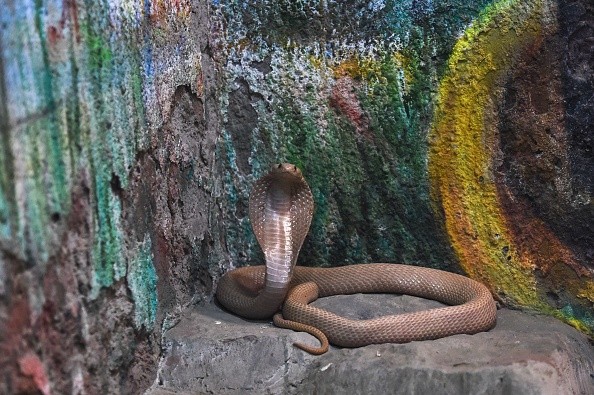Vava Suresh, India's famous snake catcher, has been rescuing a cobra within the Kottayam district of Kerala on the night of Jan. 31 when, in a brief movement, it bit him above the knee.
Suresh suffered a cardiac arrest even as being rushed to the Kottayam district hospital
The 47-year-old had been bitten by a snake 16 times but never before had it been so serious.
This time, he was rushed to the hospital and treated him with 65 bottles of antivenom after that cobra bite nearly killed him.
'Second birth' has been given to him
According to Newsweek, Suresh was in intensive care for a week.
Local news outlet Onmanorama reported that they usually provide 25 bottles of antidote to people bitten by cobras.
However, the medical committee decided to give him more injections after Suresh's health did not improve.
The medical team said Suresh's body was completely cleansed from the toxin.
It took more than 65 bottles of antidote, more than the normal amount, to bring Suresh back to life, the sources said.
He was on respiratory support until Feb. 3rd, as per Indian Express.
The hospital's medical board discharged Suresh after he was fully healthy and recovered from his fever.
Meanwhile, the wound on his right leg from the snake bite has not yet fully healed, but Suresh can walk and eat unaided and only struggles with minor pain, according to authorities.
Read more: Cone Snail Venom Might Hold the Cure for Malaria, Study Shows
What is a cobra and how is its venom very dangerous?

Cobras are elapids, a type of viper with hollow fangs attached to the upper jaw at the front of the mouth.
According to the San Diego Zoo, these snakes inject venom through their fangs because they cannot prey on fangs alone.
They also have an excellent sense of smell and night vision.
In addition to the characteristic hood, the cobra has round pupils and soft scales.
Cobras are also related to taipans, coral snakes, and mambas, which are all members of the Elapidae family. The Elapidae family cannot fold their fangs down as vipers can, so mostly their fangs are shorter.
According to National Geographic, their venom is not the most powerful of all vipers, but the amount of neurotoxin they can deliver in a single bite can kill up to 20 people or even an elephant with up to 2/10 ounces of liquid.
Cobra venom affects the respiratory center of the brain, causing respiratory arrest and heart failure.
Threats of survival of cobras
The International Union for Conservation of Nature has listed the cobra as a vulnerable species.
These snakes face many threats from human activity.
Intensive deforestation in Southeast Asia has destroyed the habitat of many cobras and is also harvested in large quantities for skin, food, and medicinal purposes.
They are also harvested for the international pet trade.
Cobras are also persecuted by those who fear a threatening reputation, as per the National Geographic.
Related Article: Can Humans Produce Venom Like Snakes? New Data Reveals Possibility
© 2024 NatureWorldNews.com All rights reserved. Do not reproduce without permission.

![Tsunami Hazard Zones: New US Map Shows Places at Risk of Flooding and Tsunamis Amid Rising Sea Levels [NOAA]](https://1471793142.rsc.cdn77.org/data/thumbs/full/70325/280/157/50/40/tsunami-hazard-zones-new-us-map-shows-places-at-risk-of-flooding-and-tsunamis-amid-rising-sea-levels-noaa.jpg)



